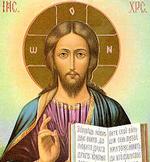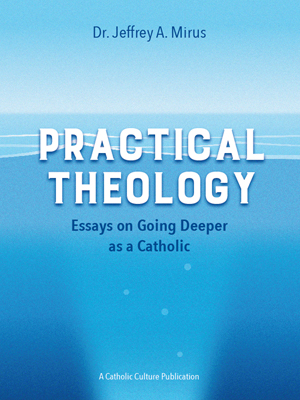Egypt: Cradle of Christian Monasticism
The Christian period after the peace of Constantine, particularly the fourth and fifth centuries, was the key moment for reflecting on the way to be a Christian in society. If Christians before the Council of Nicaea had not wanted to accept civic responsibilities personally, those of the post-Nicene period went so far as to have a Christian on the imperial throne immediately (the Emperor Constantine, who with Licinius granted Christians the civil recognition of their religion). It was usually the Bishops who handled the Church's relations with civil institutions, with all the advantages and difficulties inherent in such a state of affairs.
The charismatic figure of the monk has its place. in any study of the Christian presence in late ancient society. Monks arose following the Constantinian peace between the Church and the empire, becoming a stimulus and symbol of Christian life, at the personal and the social level, in that critical period of late antiquity.
Monks wanted to remain on the fringes of the complex urban problems of human society, but at the same time were closely involved in the urban life of society. At first, therefore, they led their religious lives in isolated places (the future hermits) and later also in urban monasteries. Little by little, male and female monasteries started to appear almost everywhere, serving as communities of prayer but also willing to meet the needs of the poor as well as those of prominent people who came to seek their advice.
The monk gradually acquired greater importance within the ecclesial community and, consequently, in society, as if he were the "Christian" soul of both the simple believer and the varied functions of a leader such as the Bishop, who in late antiquity had to serve as priest, pastor, patron, orator, jurist, judge, etc.
The first forms of monasticism appeared in Egypt. They were part of the antipagan movement of the first Christian emperors, which led to the crisis of paganism in those areas. Perhaps the monastic context arose from within the Christian Manichaean mission which Christianized the outlying areas of Egypt and may have given monks that basis which belonged to the fulfilment of the Manichaean "elect".
Egyptian monasticism, classified as a social phenomenon, was certainly varied, that is, uncultured people were also accepted, but it owes its consistency to the fact that it never made use of any culture, either of high society or of the ecclesiastical organization. Monks certainly practised a variety of ascetic forms, principally the Pachomian coenobitic life and the models of Abbot Anthony, with both eremitic and semi-eremitic approaches. Forms of monasticism developed in the north (Nitria Scete) and in the south (the Thebaid), as well as other forms associated with Apollo of Bawit and Paul of Tamma.
Pachomius' principal monastery at Pbow was close to Nag Hammadi (which had 13 Gnostic texts). Pachomian monasticism, the first to have an organized form, made an essential contribution to the beginnings of an original Coptic literature, starting with Archimandrite Shenoute of the famous White Monastery near Sohag. In fact, Shenoute used all other Greek literary genres in addition to the epistolary style and that of the Rules.
Greek patristic texts were thus translated in this sort of context. The division that arose after the Council of Chalcedon between the Christian regions of Egypt and the stances or Rome and Byzantium led them to find their national identity in the Monophysite position and their defender in Athanasius, as we see in the anonymous work Historia Ecclesiastica. Towards the end of the sixth century, before the Arab invasion, the Coptic cultural circle centred on Patriarch Damian asserted itself, producing an abundance of mostly liturgical literature.
Coptic literature extols the holiness of a land, Egypt, in close connection with monasticism. Monks are its heroes and they define its formation. As an example we mention a summary text, the praise of Anthony by John of Shmun: "Anthony, says Athanasius, was of Egyptian descent. Where will the sun rise if not in the east? And where do you expect Anthony to appear other than in Egypt, the 'place where sin abounded yet grace even more abounded', a place of prosperity for the native people and a meeting place for foreigners? Indeed most of the saints who lived there came from Egypt, or Egypt drew them from other nations as to a valley where waters streaming from every side converge, and like the sea which has its own waters and those that continually flow into it from every part".
The Coptic monk received elementary instruction which enabled him to read and memorize texts of Sacred Scripture. In one of the earliest Coptic texts, the following rule is given for a new arrival at the monastery: "The new arrival at the monastery will first of all be taught what he should observe, and if, once instructed, he accepts everything, he will be given 20 Psalms to learn or two Letters by the Apostle or some other part of Sacred Scripture. If he does not know how to read, at prime, terce and sext he will go to someone who can teach him and who has been appointed for this purpose. He will remain with him and learn with the greatest attention and all gratitude. He will then write the alphabet, syllables, verbs and nouns, and even if he does not want to, he will be forced to read. And there will be absolutely no one in the monastery who does not learn to read and does not know by heart something of the Scriptures: as a minimum, the New Testament and the Psalter".
© L'Osservatore Romano, Editorial and Management Offices, Via del Pellegrino, 00120, Vatican City, Europe, Telephone 39/6/698.99.390.
This item 2963 digitally provided courtesy of CatholicCulture.org






